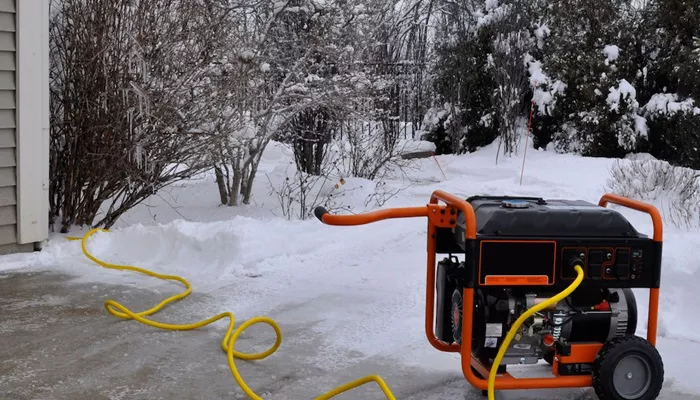Generators are essential backup power sources for homes, especially during power outages. Whether you live in an area prone to storms or experience frequent electricity disruptions, knowing how to use a generator safely and efficiently is crucial. This guide covers everything from generator types to installation, operation, and maintenance.
Types of Home Generators
Before using a generator, it’s important to know which type suits your needs.
Portable Generators
Portable generators are affordable and versatile, ideal for temporary power during outages. They run on gasoline, propane, or diesel and can power essential appliances like refrigerators, lights, and fans.
Pros
- Lower cost
- Easy to move and store
- No permanent installation required
Cons
- Limited power output
- Requires manual fueling
- Not suitable for whole-house power
Inverter Generators
Inverter generators are a quieter, more fuel-efficient version of portable generators. They produce clean electricity, making them safe for sensitive electronics like laptops and TVs.
Pros
- Quiet operation
- Energy-efficient
- Stable power output
Cons
- Higher cost than standard portable generators
- Limited wattage capacity
Standby Generators
Standby generators are permanently installed and automatically turn on during a power outage. They connect directly to your home’s electrical system and run on natural gas or propane.
Pros
- Automatic operation
- Powers the entire house
- No need for manual refueling
Cons
- Expensive installation
- Requires professional setup
How to Safely Use a Generator at Home
Choosing the Right Location
Generators emit carbon monoxide (CO), a deadly gas. Always place the generator:
- Outdoors only – Never run it inside a garage, basement, or enclosed space.
- At least 20 feet away from windows and doors to prevent CO poisoning.
- On a dry, level surface to avoid tipping or water damage.
Proper Grounding
Most portable generators are already grounded, but if yours isn’t:
- Use a copper grounding rod (at least 4 feet deep).
- Connect the generator’s grounding terminal to the rod with a heavy-duty wire.
Connecting Appliances
There are two ways to connect appliances:
Direct Plug-In (For Small Loads)
- Use heavy-duty extension cords rated for outdoor use.
- Plug appliances directly into the generator.
Transfer Switch (For Whole-House Power)
- A transfer switch connects the generator to your home’s electrical panel.
- Prevents backfeeding, which can electrocute utility workers.
- Must be installed by a licensed electrician.
Starting the Generator
Check oil and fuel levels : Low oil can damage the engine.
Turn off all connected appliances : Prevents power surges.
Start the generator : Follow the manufacturer’s instructions (pull cord or electric start).
Let it warm up : Allow 2-3 minutes before plugging in devices.
Monitoring & Shutdown
Avoid overloading : Check the generator’s wattage capacity and prioritize essential appliances.
Refuel only when off : Spilled fuel on a hot engine can cause fires.
Cool down before storage : Let the generator run for a few minutes without load before turning it off.
Generator Maintenance Tips
To ensure long-lasting performance:
- Change oil regularly (every 50-100 hours of use).
- Replace air filters to prevent engine strain.
- Use fuel stabilizer if storing for long periods.
- Test monthly to ensure it’s ready for emergencies.
Common Mistakes to Avoid
Running indoors : Deadly CO buildup can occur in minutes.
Overloading : Can damage the generator and connected devices.
Ignoring maintenance : Leads to breakdowns when needed most.
Conclusion
Using a generator for home backup power requires careful planning and safety precautions. Whether you choose a portable, inverter, or standby generator, proper installation, operation, and maintenance are key. Always prioritize safety by keeping the generator outdoors, using a transfer switch, and avoiding overloading. With the right knowledge, you can keep your home powered during outages without risks. By following this guide, you’ll be prepared to use a generator effectively and safely whenever the need arises. Stay powered, stay safe!

